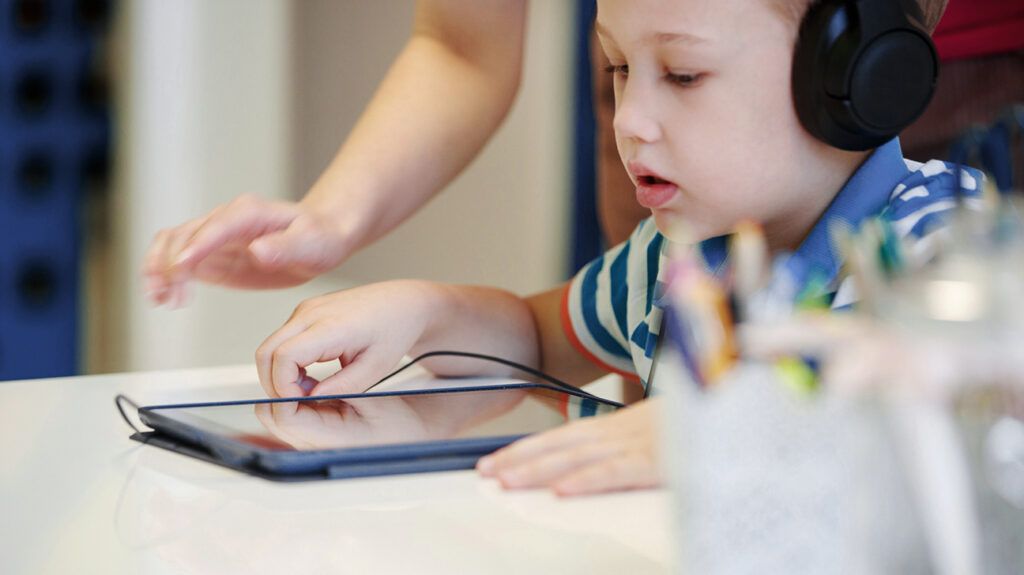Auditory processing disorder (APD) is when the brain cannot interpret sounds correctly. People may also refer to APD as central auditory processing disorder.
People with APD may find it difficult to notice subtle differences in words. Noisy environments can make it more challenging to take in verbal information.
Certain treatments and management strategies can help a person manage APD. This may include changing a learning environment so that someone with APD can follow sounds better.
This article explains the symptoms, causes, diagnosis, and treatment for APD, as well as when to contact a doctor.

APD can affect how people process information and interpret sounds. Even if a person is listening, they may need additional help to understand or follow someone who is speaking.
APD
- telling where a sound is coming from
- hearing subtle differences between words, such as “70” and “17”
- filtering out unimportant background noise
- remembering things that other children may find easy to remember, such as words to a nursery rhyme
- getting the correct order of sounds, such as confusing “64” with “46”
- understanding words spoken at a fast pace
- responding promptly in a conversation or responding appropriately
- maintaining focus and attention
- reading, spelling, and learning
- following complex instructions
People with APD
APD can occur for various reasons, including genetics, disease, or damage to the brain from exposure to toxins. Causes of APD may include:
- stroke
- injury or damage to the brain, such as through meningitis or head trauma
- multiple sclerosis or other neurodegenerative disorders
- tumors or lesions affecting the central nervous system
- seizures or epilepsy
- heavy metal poisoning
- chronic ear infections
- developmental delays
In adults, age-related changes and degeneration of the central auditory nervous system (CANS) can cause APD. The CANS allows signals from the inner ear to reach the brain to process and interpret sounds correctly.
In some cases, there is no known cause for APD.
Certain factors in pregnancy or newborns
- hypoxia, low levels of oxygen
- anoxia, a severe form of hypoxia
- premature birth
- exposure to drugs
- hyperbilirubinemia, an excess of bilirubin in the blood
- cytomegalovirus, a viral infection
A team of healthcare professionals may form part of the APD diagnostic process. This might include:
- a psychologist to assess cognitive function
- a speech and language specialist to assess speech and verbal communication
- teachers and caregivers to report on academic or social behavior and any symptoms they observe
An audiologist, a doctor who diagnoses and treats auditory problems, will diagnose APD. They will carry out a range of tests in a sound-treated room, which measures how a person identifies and responds to sounds.
Treatment for APD focuses on altering environments and implementing strategies to help support a person with the condition. Treatments may include:
- altering a learning environment to help improve how people can receive and process information
- electronic devices that help support learning
- strategies to help strengthen abilities, such as attention, memory, and problem-solving skills
- one-to-one support with a specialist or therapist
- educational therapy, which can help people build their strengths, compensate for deficits, and boost their confidence
APD can affect people differently, so treatments will be specific to an individual’s needs and symptoms.
How to support a child with APD
Teachers, parents, and caregivers can work together to help support a child with APD. According to the children’s mental health advocacy group, Child Mind Institute, support may include the following:
- seating a child at the front of the class so they can focus on the teacher more easily
- getting the child to look at someone when they are talking so the child can see the mouth forming words, which may help them understand better
- talking more slowly and stressing important words
- telling a child when they are about to say something important
- keeping instructions simple and to the point, and using words such as “first,” “second,” and “finally,” which helps children order instructions
- using technology aids, such as noise-canceling headphones to block out background noise or computer games that help with APD
- using a microphone in class that connects wirelessly to headphones a child can wear
- using visual methods and multisensory learning techniques as much as possible to give information
- spending time outdoors with a child
Learning and socializing may feel more difficult for children with APD, which they may find frustrating or upsetting. It is important to remind a child with APD that the condition is not their fault and to provide them with support and encouragement.
People can speak with a doctor if they think they or a child may have APD. Signs of APD may include:
- frequently needing someone to repeat instructions or directions
- repeatedly missing or mishearing things in conversation
- difficulty following spoken instructions or directions
A doctor can refer people to specialists who can diagnose APD or any other condition that may be causing symptoms.
A team of healthcare professionals can develop a treatment plan to strengthen auditory skills and compensate for deficits. This may involve counselors or therapists.
In some cases, APD in children may improve over time as their auditory processes develop. However, interventions may help them manage the condition and prevent frustration, including difficulties in social development and learning.
APD is a condition in which the brain cannot correctly process sounds. It can cause people to mishear or have difficulty correctly interpreting sounds.
People with APD may have difficulty telling the difference between subtle changes in words. They may require frequent repetition of directions, and find spoken communication difficult, particularly in noisy environments.
Treatments can help someone manage the symptoms of APD. They may include technology aids for following sounds, changing a learning environment for better support, and educational or speech and language therapy.
